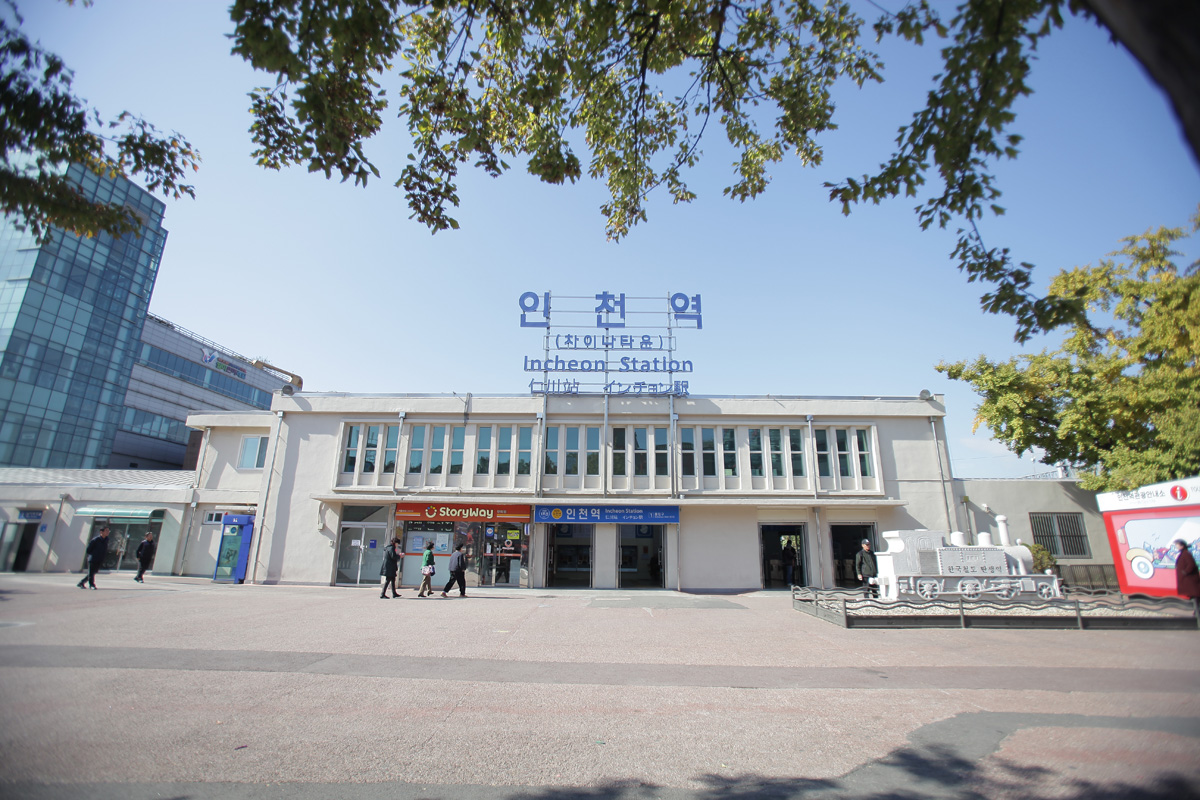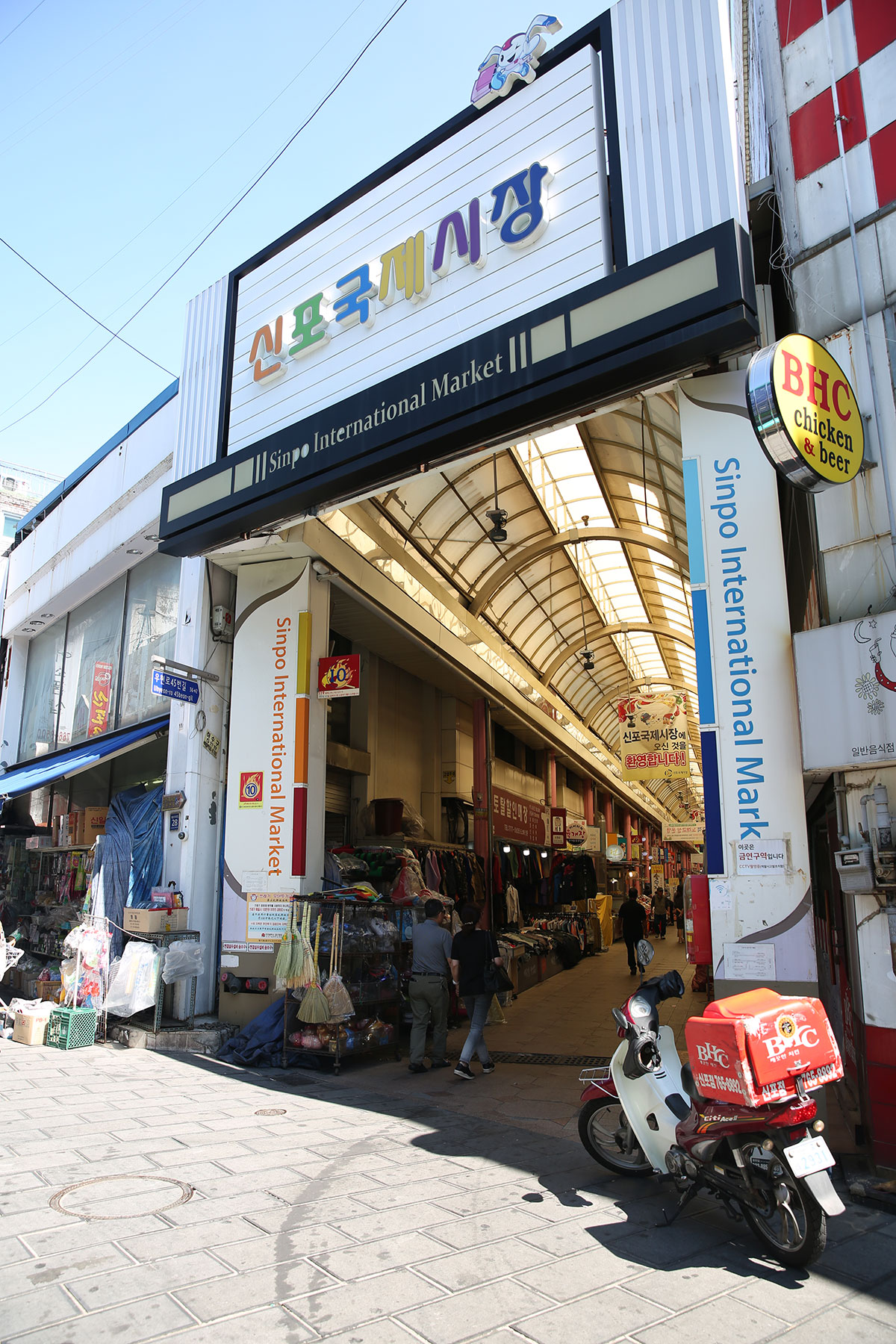The Story Course of the Historical and Cultural Street of the Open Trade Port
The Story Course of the Historical
and Cultural Street of the Open Trade Port
The historical and cultural street of Incheon Open Port is a place that has been intact for over 130 years since its opening, and spaces resembling black and white photographs are hidden throughout its quiet streets.
Let’s take a walk through history by looking around the historical and cultural spaces that have preserved traces of time that have gone by.
- Incheon Station
- Incheon Art Platform
- Incheon Open Port’s Modern Architecture Exhibition Hall
- Incheon Open Port Museum
- Daebul Hotel Exhibition Hall
- Museum of Korean Modern Literature
- Jung-gu Office
- Freedom Park
- A monument for the 100th anniversary of diplomatic relations between Korea and America
- Old Jemulpo Club
- Hong
yemun - Incheon Jungdong Post Office
- Sinpo Inter
national Market - Dapdong Cathedral
- Naeri Church
(Wesley’s Chapel)
- 1
 Incheon StationIncheon Station is the last station of Korea's first railway, Gyeongin Railway, and is a place with historical significance.
Incheon StationIncheon Station is the last station of Korea's first railway, Gyeongin Railway, and is a place with historical significance.
Even now, as the end point of the Gyeongin Line and the Suin Line, as well as the starting point for a trip to Jung-gu, Incheon, it is a place that numerous people continue to visit. - 2
 Incheon Art PlatformYou can see the Incheon Art Platform by walking for about 5 minutes from Exit 1 of Incheon Station.
Incheon Art PlatformYou can see the Incheon Art Platform by walking for about 5 minutes from Exit 1 of Incheon Station.
Buildings constructed in the 1930s and 40s were remodeled and rebuilt into 13 buildings, including creative studios, workshops, museums, education centers, and exhibition halls.
As it is a place where the past and present, art and daily life coexist, it is a great place to take beautiful and meaningful photos. - 3
 Incheon Open Port’s Modern Architecture Exhibition HallThe Modern Architecture Exhibition Hall is in a building opened in 1883 and is a space that has retained its building’s 130-year history.
Incheon Open Port’s Modern Architecture Exhibition HallThe Modern Architecture Exhibition Hall is in a building opened in 1883 and is a space that has retained its building’s 130-year history.
It is a space where you can get a glimpse of modern history as a building, and although it is a small exhibition hall of a single story, it is a place where the footsteps of modern civilization live and breathe.
Built according to the architectural styles of countries such as Japan and the Qing Dynasty at the time, you can behold an exotic scenery of architecture from the early modern period, modern architecture that is now lost, and existing architecture. - 4Incheon Open Port MuseumThe Open Port Museum was remodeled in 2010 from the former Japan First Bank Branch, which was the only financial institution in Incheon at the time, and was reborn as a museum.
A total of 4 exhibition halls display various historical artifacts from the Incheon landscape during the opening period to modern civilizations, so you can see the history of Incheon Port at a glance. - 5Daebul Hotel Exhibition HallThe Daebul Hotel Exhibition Hall showcases the history of Daebul Hotel, Korea's first Western-style hotel.
In the Jung-gu Life History Exhibition Hall, you can see the life history of Jung-gu, Incheon in the 1960s and 1970s. - 6Museum of Korean Modern LiteratureThe Museum of Korean Modern Literature is a literary museum that presents and preserves the modern literature of Korea from the 1890s to the late 1940s.
It is the first public comprehensive literature hall in the country where you can learn and experience modern literature. - 7Jung-gu OfficeJung-gu Office and the surrounding wooden cafes were once a settlement of colonial Japan.
Traces of many Japanese people who lived in Jung-gu can be found throughout the streets. - 8
 Freedom ParkFreedom Park, located in the center of Jung-gu, is Korea's first modern park.
Freedom ParkFreedom Park, located in the center of Jung-gu, is Korea's first modern park.
It boasts beautiful scenery throughout the four seasons, especially if you visit during the April Cherry Blossom Festival.
Recently, it has been loved as a filming location for various dramas and movies, including the popular drama “Dokkaebi” (Goblin).
In the park, there is a monument to General MacArthur to commemorate the 100th anniversary of diplomatic relations between Korea and the United States, and nearby there are many other things to see like Hongyemun Gate, Jemulpo Club, and Incheon Weather Station. - 9
 A monument for the 100th anniversary of diplomatic relations between Korea and AmericaThe monument was built to commemorate the 100th anniversary of diplomatic relations between Korea and the United States.
A monument for the 100th anniversary of diplomatic relations between Korea and AmericaThe monument was built to commemorate the 100th anniversary of diplomatic relations between Korea and the United States.
In May 1882, while overlooking Incheon, South Korea and the United States signed the Treaty of Protection and Trade at Hwadojin Hill.
In 1982, to celebrate the 100th anniversary of the signing of the treaty, architect Kang Seok-won, sculptor Choi Man-rin, and poet Park Doo-jin participated in the construction of this monument.
The monument, composed of eight towers 15.5 to 20m high, is in the forest at the summit of Freedom Park, and in front of it is a commemorative sculpture called “Motion: That 100 Years”, symbolizing the friendly cooperation between the two countries. - 10Old Jemulpo ClubJemulpo Club was asocial place for foreigners who lived near the open port and exchanged cultures with each other.
The original name was Jemulpo Club, but the Japanese style of the club, “Kurakbu”, has been established and continues to this day.
Even now, it is being used as a cultural space by recreating its old appearance, and it is called the Jemulpo Club in consideration of this historicity. - 11
 HongyemunHongyemun Gate is a rainbow-shaped stone gate that runs through Eungbongsan Mountain and connects Incheon Port and Jeon-dong.
HongyemunHongyemun Gate is a rainbow-shaped stone gate that runs through Eungbongsan Mountain and connects Incheon Port and Jeon-dong.
The name, Hongyemun (虹霓門), means a gate that looks like a rainbow.
In 1905, Japanese settlements were expanded to facilitate the transportation of goods, and Japanese engineering troops began making the gate to go to the settlements of each country.
Completed in 1908, this gate has aged for 110 years with moss on it to show the time that has gone by.
Let's take a quiet walk into the historical rainbow gate. - 12Incheon Jungdong Post OfficeModern communication in Korea began in 1884 when the postal service between the Post Office of Hanseong and the Post Office of Incheon began.
Therefore, the history of postal administration in Incheon is the history of Korea's postal administration, and the Jungdong Post Office is the place where the postal service first began.
The Jungdong Post Office was newly built in 1923 and was designated as the city's Tangible Cultural Property No. 8 due to the building’s exquisite harmony of Eastern and Western architectural styles. - 13
 Sinpo International MarketSinpo International Market is located in Sinpo-dong, Jung-gu, Incheon.
Sinpo International MarketSinpo International Market is located in Sinpo-dong, Jung-gu, Incheon.
As Incheon's representative market with a history of over 100 years since the opening of the port, you can enjoy a variety of food and joyful experiences that traditional markets offer. - 14Dapdong CathedralDapdong Cathedral is the first Catholic cathedral in Incheon, and it retains the history and beauty of Korea's modernization.
The cathedral's domed ceilings, columns, and stained glass add to its classic beauty.
Dapdong Cathedral has been well preserved through restoration of damaged sections, and has been designated as Historic Site No. 287 in recognition of its value as one of the oldest Western-style modern buildings in Korea. - 15
 Naeri Church (Wesley Chapel)Naeri Church is the birth place of Korean Protestant missions, where you can feel the enlightenment period and the history of missions.
Naeri Church (Wesley Chapel)Naeri Church is the birth place of Korean Protestant missions, where you can feel the enlightenment period and the history of missions.
Naeri Church helped bring new culture into Korea during the enlightenment period through education and missions.
Currently, there are three buildings: the 100th anniversary of missions chapel; the Appenzeller Vision Center, which was newly built in 2011; and the Wesley chapel, which was restored to its former state in 2013.
It is a place where you can see the history of Protestantism in Korea as it exhibits materials and photos throughout the church on the history of missions.

